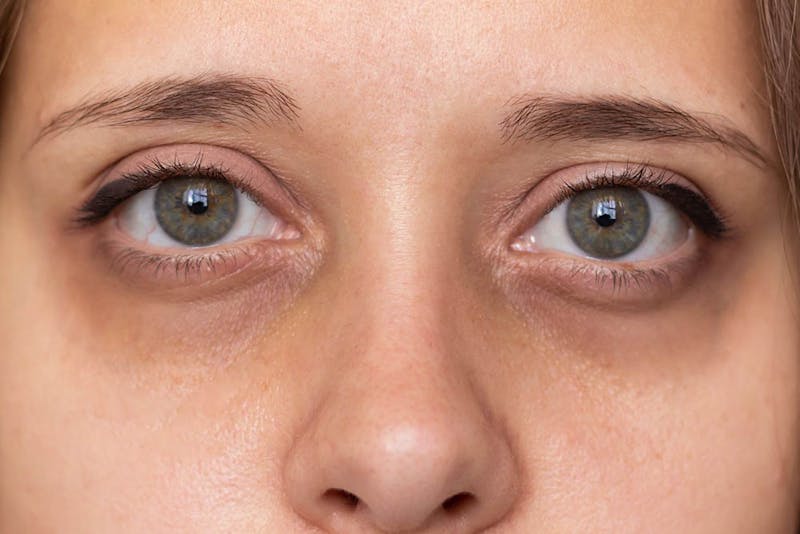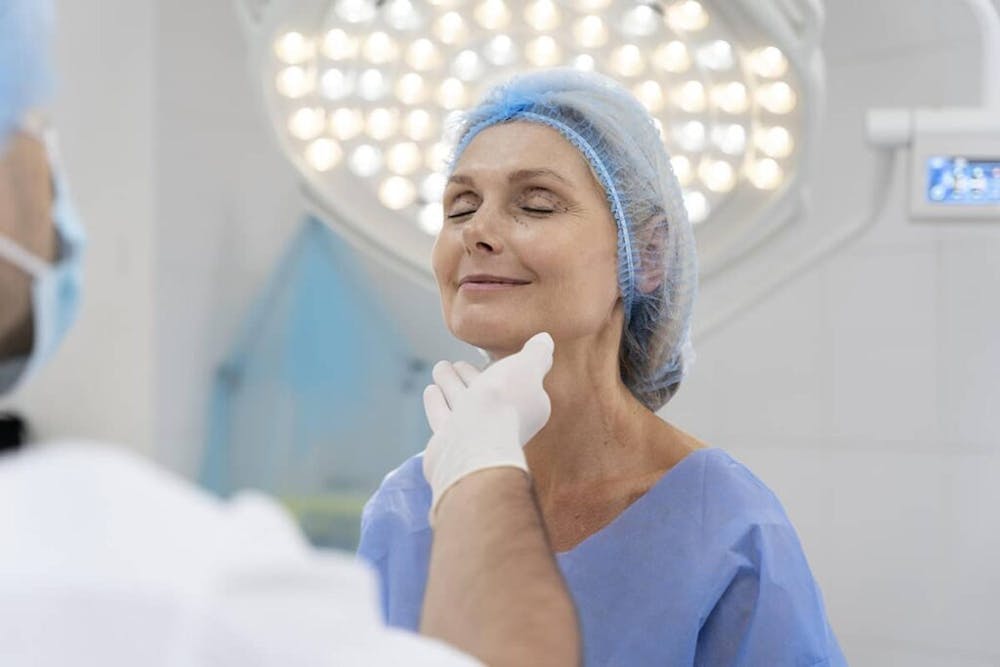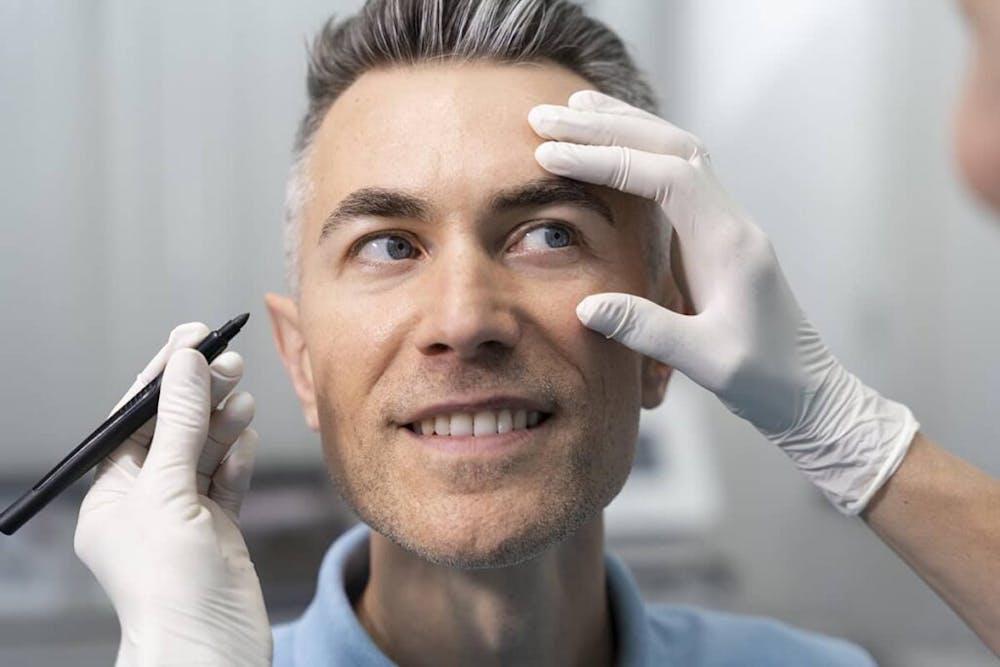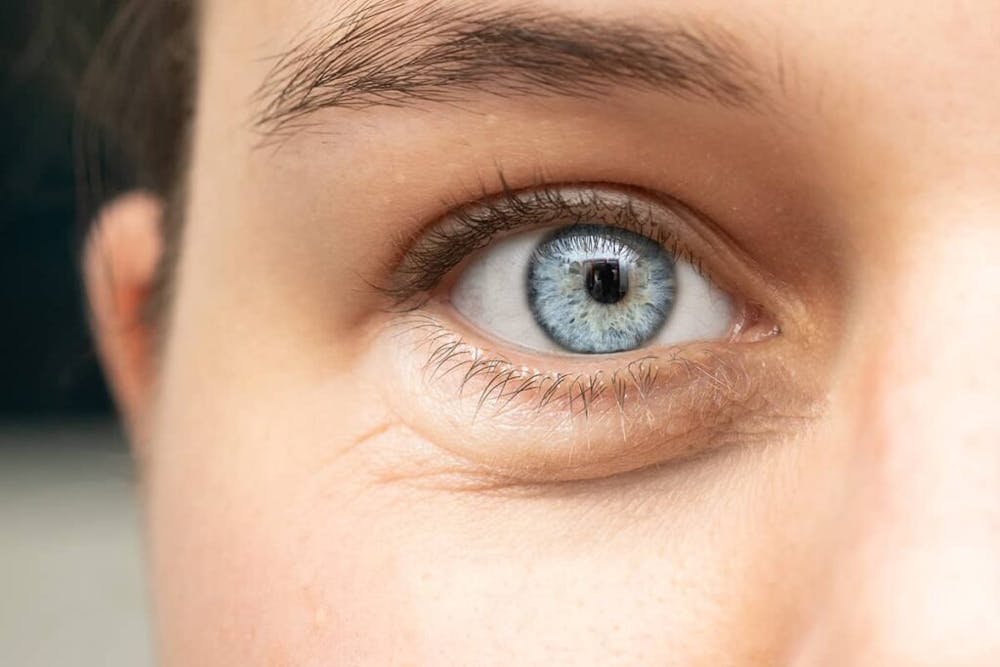
Posted by Dr. Anil R. Shah
Are you considering undergoing a lower blepharoplasty procedure? A lower blepharoplasty is a cosmetic surgery procedure that removes excess skin from the lower eyelids, giving the area a more youthful and refreshed appearance. Though the recovery process can be lengthy, it’s important to know what to expect in order to ensure a successful outcome. In this article, we’ll discuss the recovery timeline and post-operative care for those who are facing lower blepharoplasty surgery. Read on to learn more and get prepared for your own surgery!
Understanding Lower Blepharoplasty
Lower blepharoplasty, a form of eyelid surgery, focuses on correcting issues affecting the lower eyelids. This cosmetic surgery targets sagging or bulging skin around the lower eyelids, often caused by aging or genetics. Unlike upper eyelid surgery, which primarily addresses drooping upper eyelids, blepharoplasty surgery on the lower eyelids often enhances tired-looking eyes and improves functionality by reducing eye strain and discomfort. The process involves discreet incisions, made on the inside or outside of the lower eyelid to remove excess fat and tighten the eyelid skin. Eyelid function and eye appearance typically improve post-surgery, marking a successful blepharoplasty procedure.
Immediate Post-Surgery Conditions
Following lower blepharoplasty surgery, immediate post-surgery conditions can vary among patients. Typically, the body’s initial reactions include sensations of tightness or discomfort around the incision area. Consistent adjustments to blood and blood flow are crucial in healing.
Vision may also be impacted shortly after surgery, with some patients experiencing temporary blurry vision. This is usually a temporary effect and typically resolves within a few weeks after surgery.
Proactive and mindful post-surgery care can often mitigate these immediate post-operative conditions, improving overall comfort and driving a smoother recovery.
Taking Care of the Incision Area after Surgery
Effective management of incision sites post-surgery is crucial to a swift and successful recovery. You should follow postoperative instructions diligently which would often include the daily application of ointments to prevent dryness around the incisions. Particularly, antibiotic ointments can aid in preventing possible infections. When it comes to cleaning, be gentle to avoid disrupting the stitches and ensure you don’t scratch or rub the area. Ultimately, proper incision care enhances healing, reduces the risk of scars, and aids in achieving the desired cosmetic results.

Essential Activities for a Successful Recovery
Recovering from lower blepharoplasty requires dedication and a wise choice of activities. Physical activity is crucial but should be handled with care. Too strenuous activities, especially in the first week after surgery, can slow healing. Try to engage in moderate activities such as light walks to improve circulation.
Another critical factor for successful recovery is sleep. Quality sleep fosters healing, so make sure your sleep schedule is well-maintained post-surgery.
The diet also plays a significant role in the recovery process. A healthy diet supplies the necessary vitamins and nutrients to heal the body. Find a balanced meal plan that encourages healing and boosts your immunity.
Lastly, remember that recovery takes time. It’s vital not to rush the process but to patiently allow your body to heal in its own time.
What to Avoid during Recovery from Lower Blepharoplasty
During your recovery from lower blepharoplasty, you should avoid certain activities and habits. Strenuous exercises, including heavy lifting, increase the risk of complications. Your body needs to focus on healing, and physical activity can divert necessary resources away from this process.
It’s also important to avoid lifting heavy items during this period. This can put a strain on your eyelids, potentially impacting the effects of the surgery. Direct sunlight can be harmful too. Always protect your eyelids by wearing sunglasses when outdoors.
Remember, the goal is to reduce risk and promote a smooth recovery. With patience and the right care, you can ensure a successful healing process after your surgery.
Expected Recovery Timeline from Lower Blepharoplasty
The recovery time following lower blepharoplasty can vary, but a typical timeline begins with the first week after surgery, where patients may feel discomfort and start to achieve visible healing. Swelling and bruising tend to be minimized 7-10 days after surgery, which is often a key point in the recovery period.
During the second week, improvements continued, with most major swelling subsiding. Patients typically meet with their surgeon a few times during this period to ensure progress and healing is progressing as expected. After three weeks, noticeable improvements in the surgical area become apparent, and patients often return to their daily routines and activities.
Please note that this general timeline might vary depending on individual factors and the surgeon’s instructions. For example, some patients may be able to return to work just days after surgery, while others might need a few more weeks. Therefore, following the surgeon’s advice is key to a successful recovery.

Critical Milestones in the Recovery Journey
The initial 2-4 weeks after lower blepharoplasty is crucial, reflecting the body’s acclimatization with the surgical intervention. In these first couple of weeks, the patient’s adherence to postoperative instructions contributes significantly to their healing trajectory.
By the second week post-surgery, adhering to these postoperative instructions allows noticeable improvement in swelling and bruising. This period also considers the removal of stitches if non-absorbable sutures were used.
The final few weeks after surgery mark an important milestone in the recovery journey. By now, most swelling and bruising should have subsided, picnic the overall rehabilitation process.
In the context of physical changes, the recovery process continually reveals improvements incrementally- showcasing the effectiveness of the surgery over a period. Following weeks after surgery, patients can expect a clearer image of their new look, as residual swelling continues to decrease.
These milestones provide a rough timeline for the anticipated recovery progression. Individual experiences, though, may vary slightly based on the individual’s health, adherence to recovery guidelines, and body’s response to surgery.
Potential Risks and Side Effects
While lower blepharoplasty is generally safe, potential risks and side effects should not be overlooked during the decision-making process. Among the most immediate risks include infection, especially if the incisions are not properly cared for post-operation.
The eyelids, given their sensitive nature, can also be affected through side effects such as swelling, pain, and dryness. It’s crucial for prospective patients to understand and weigh these potential risks and effects before deciding on this surgical procedure.
This understanding allows informed consent and preparedness for potential outcomes, providing an overall better experience and satisfaction with the cosmetic procedure.
Long-Term Impact on Vision
After having an eyelid lift, maintaining a keen focus on vision is key during the recovery process. Blurred vision or blurry vision could be a post-surgery symptom, reducing gradually as healing progresses. These distortions should not cause distress, as they typically diminish in the weeks following the surgery. Prolonged visual effects could signify complications, and an ophthalmologist’s consultation would then be crucial. By understanding this, patients can keep realistic expectations and handle such situations better, ensuring eventual vision restoration and a successful recovery.
Appearance of Scars after Surgery
Scars after surgery are a possibility, their appearance largely dictated by individual healing capabilities and post-surgery care. Surgeons often make incisions along the natural crease of the eyelid to minimize visibility. When operating on excess skin during a lower blepharoplasty, the stitch placement also plays a significant role in the resulting scar’s appearance.
The timing and care of suture removal can influence the scar’s final appearance, creating a fine line that follows the eyelid’s curve. Despite these measures, blepharoplasty scars may still be visible post-surgery, but they often fade with time and proper aftercare. Ensure to consult with your surgeon for best practices in scar management.
Handling Potential Scarring
Scarring after surgery such as an eyelid lift can be distressing to patients. However, there are ways to minimize or potentially erase these reminders. One of these methods is the removal of excess skin or any loose skin that might cause folds where scar tissue could form.
Following the surgeon’s instructions is crucial in scar management. The healing process takes time, and your body needs adequate rest and proper care to ensure minimal scars. Remember, the aim is to promote a smooth healing journey while ensuring the best aesthetic outcome.
Factors that Can Prolong Lower Blepharoplasty Recovery
Ignoring the surgeon’s instructions could prolong your recovery period. The recovery process mainly depends on how well you manage pain and adhere to the prescribed care routine. High pain levels can stress the body, delaying healing. Making alterations to the surgeon’s recommendations without professional guidance may also hinder your recovery. Ensure to strictly follow all instructions and consult an experienced surgeon if any clarifications are needed. Each body heals at its own pace, but factors like pain handling and adherence to guidelines largely dictate the timeframe.

Your journey through lower blepharoplasty recovery can significantly benefit from expert advice. Dr. Anil Shah, with his wealth of experience, provides a comprehensive approach to care, addressing all your concerns and ensuring optimal and natural-looking results. Don’t overlook the importance of professional expertise when embarking on this restorative journey. Reach out for a consultation with Dr. Anil Shah, and take an assured step towards successful recovery and the renewed confidence that comes with it.

